And while the camera trap was wide angle, and set back to get the whole pond, the photo resolution is good enough to be pretty sure on 17 bird species.
Some of the birds came solo, some in pairs, some mixed groups, and others, as you'll see below, showed up all party-bus like, which attracted friends.
Here are some examples...
Oak Titmouses were common and expected:
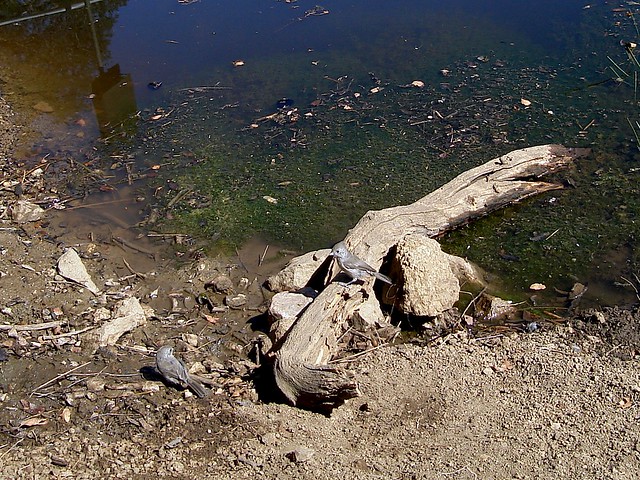
Western Bluebirds and Acorn Woodpeckers as well:

Sage Sparrows are also often seen in the Tehachapi Mountains:
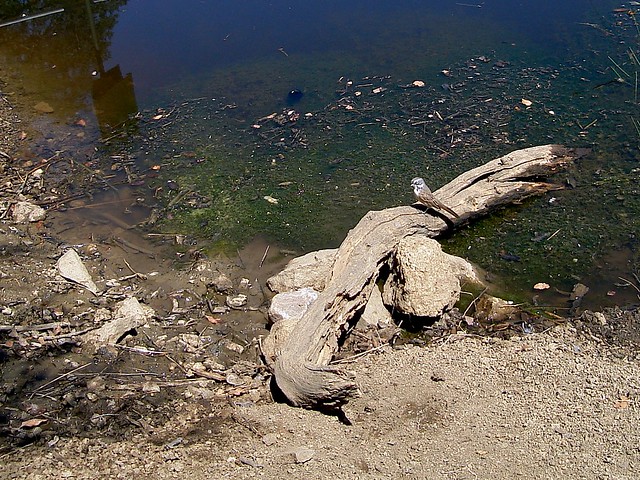
And I think this is a Chipping Sparrow, again not uncommon in the Tehachapis:
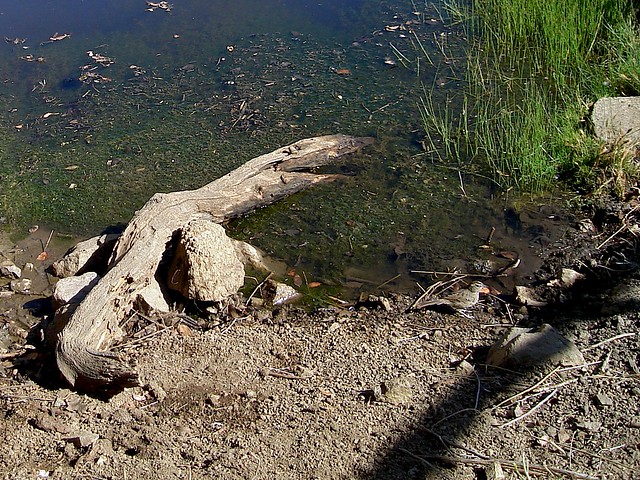
A couple of California Towhees, and probably a female Bullock's Oriole (center left):
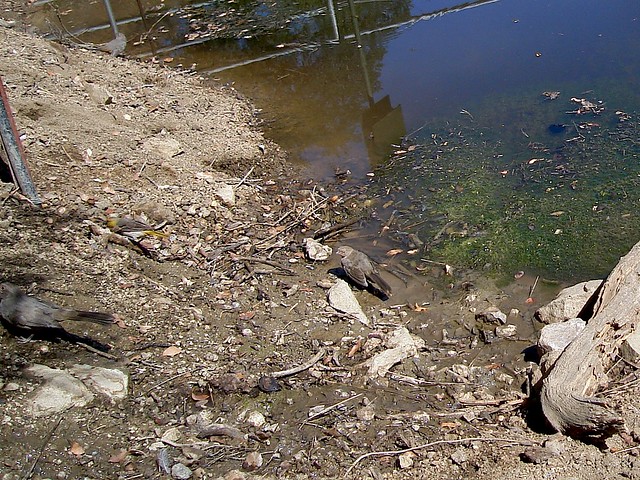
Bathing Scrub Jays and a California Towhee:
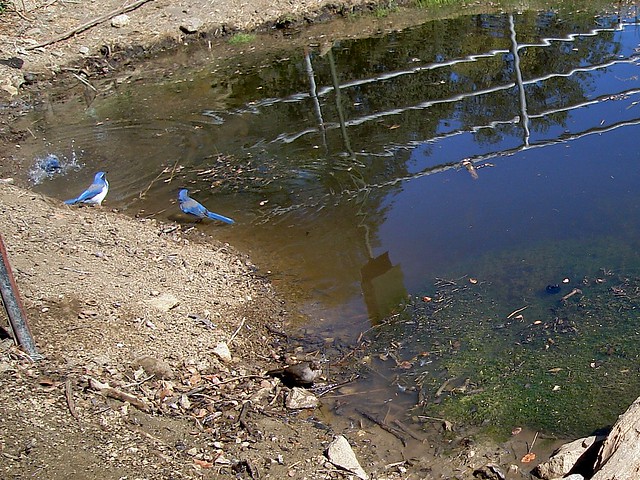
A Mourning Dove and probably a Sage Sparrow:
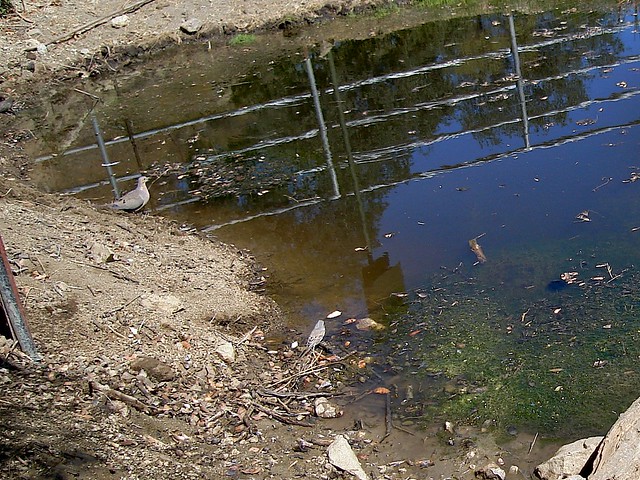
That's 9 species so far.
In Australia, on cold nights, the indigenous Australians (Aborigines) would dig a small pit in the ground and sleep in it while cuddling a dingo for warmth. On colder nights, they'd cuddle with two dingos. And if freezing, they'd say it was a "three dog night."
Which is where the American rock band got its name.
So what does a three owl night mean?
Because, on night #3 of the 3 nights, 3 different owl species visited the pond.
The 1st a Saw-whet Owl at 11pm:
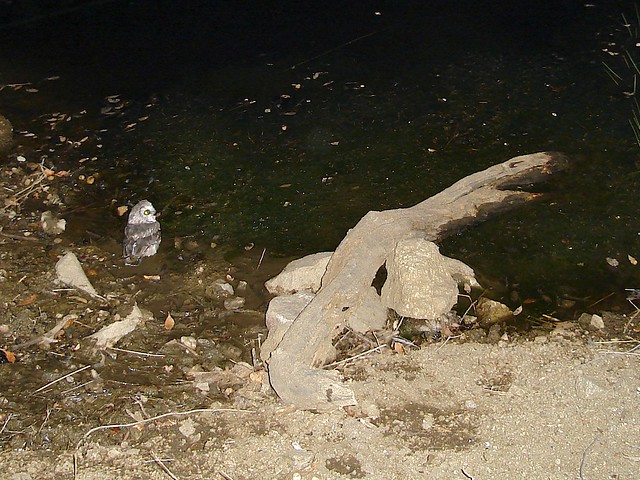
The 2nd a Western Screech Owl, at 1:30am:

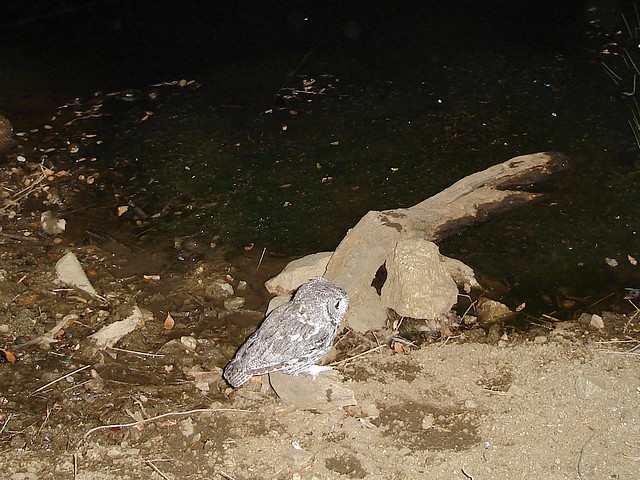
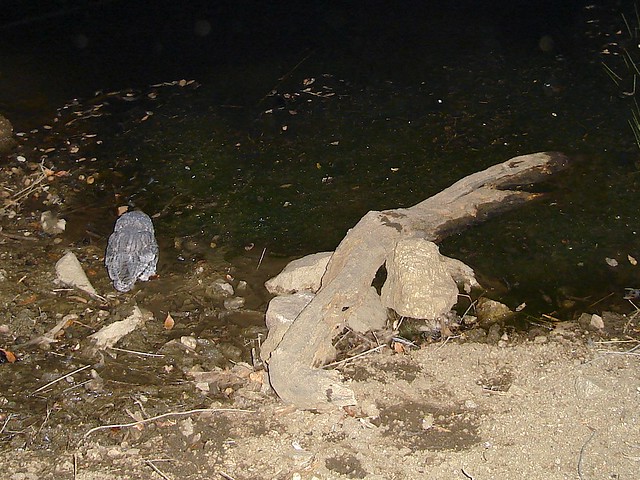
Then, at 2am, the Saw-whet returned, and gave the cam a good stare down.
Along with thirst quenching, the owls may also be hunting the pond. In the photo below, look in the water on the far left side, in the spot near where both the Saw-whet and the Screech are in the water in photos above. That's a western toad floating in the water. You can see the shine of its right eye, and the stripe on its back. And in other photos I can see chorus frogs, as well.
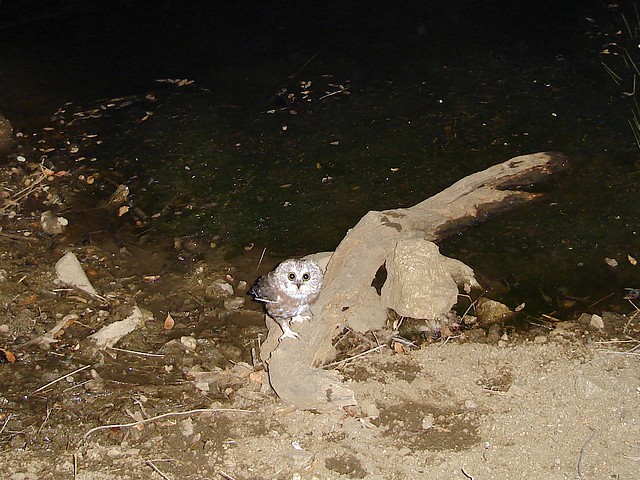
The 3rd owl for the night was a Barn Owl at 4:40am:
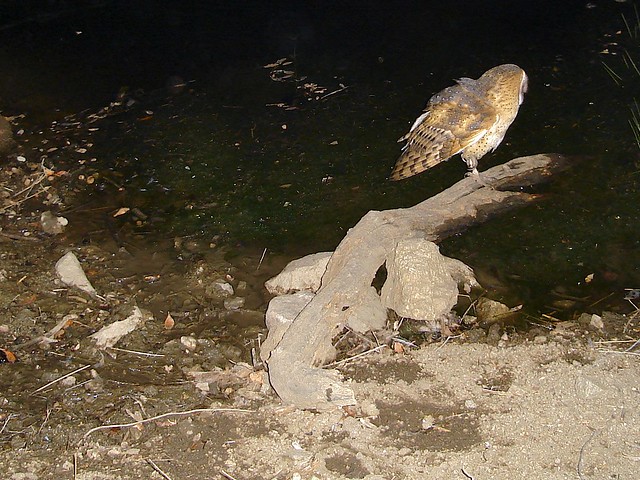
The owls are crazy cool, of course, but I also enjoyed seeing the masses of California Quail that visited the spring. Permanent ground-level watering holes such as this are critical for them to be able to maintain strong coveys.
And, not only were there 15 quail visits in the 3 days, there seems to be at least one large covey in the area. They showed on day 3, and it took them over 10 minutes to drive through and tank up. In multiple photos I can count near 40 birds, so the covey could easily include hundreds.
Here's a sampling of that visit. Note all the quail in the upper left corner as well. And the other birds that joined the quail party at the watering hole, including: Spotted Towhee, Cal Towhee, Oak Titmouse, Scrub Jays, Acorn Woodpeckers and a Sage Sparrow. And ground squirrels.

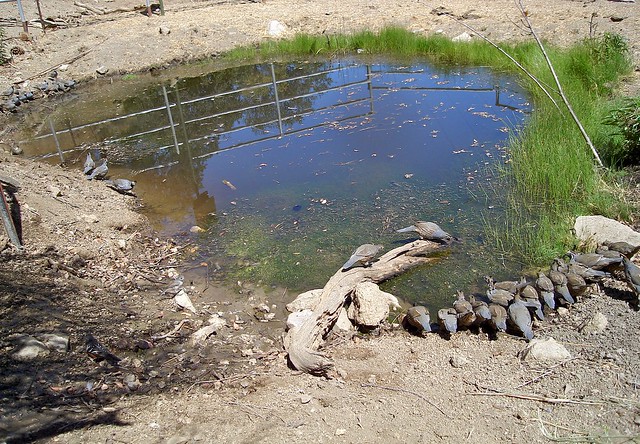
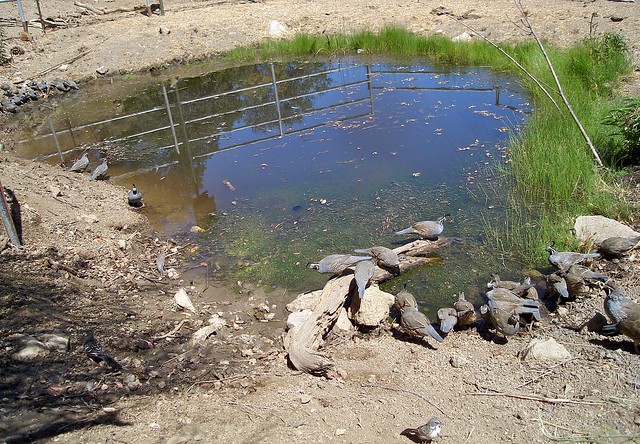
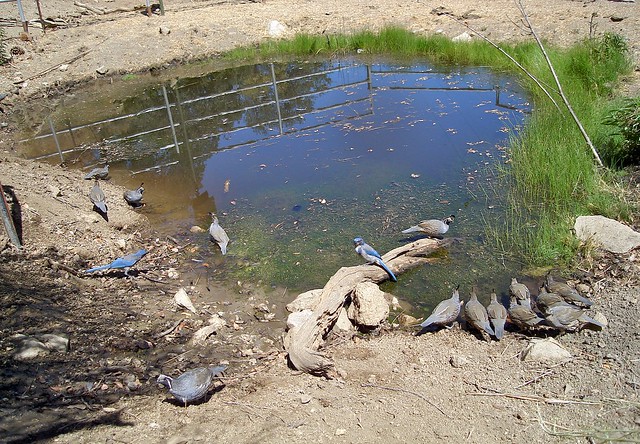
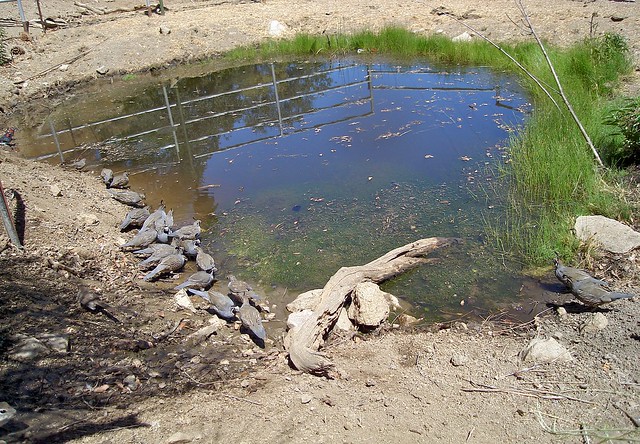
Really gives the pond that communal watering hole feel.
And gets us to 14 bird species. The other 3 were House Finch, Black Phoebe and maybe a Gray Flycatcher. But the photos are too sorry to show.
For a grand total of 30 species: 17 birds, 10 mammals and 3 herps (toad, tree frogs, fence lizard).
Not bad for 3 days "work."
====
References:
- Wikipedia - Three Dog Night
- Nature of a Man (this blog) - Exclusionary Principles
- Nature of a Man (this blog) - more stories from the Tehachapis

This is quickly becoming one of my favorite blogs. Well done.
ReplyDeleteThanks Nate. No uncommon birds of course, but a nice variety of usual suspects.
DeleteGreat survey, and you used legal bait! (inside joke, friends). Love the owls, too.
ReplyDeleteWell, you did teach us to look for "windfalls," Codge. :) And with these droughts, could there be anything more valuable?
Delete